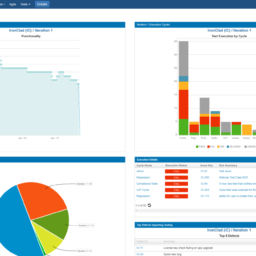Software testing involves different stages and is based on preparing and executing successful test cases. Testing has a great influence on the quality of the final product. This is the reason why it is so important to pay attention while planning the process and how it is integrated into the remaining development life cycle. In order to ensure integration, many organizations prefer using Jira test management tools for this purpose. Atlassian suits support managing the workflow in the case of more complex projects that involve the cooperation of different people. In a software development process, all the phases are related to each other. It is a clever idea to catch up with the connections between the project goals, features, and test cases in order to build a consistent process.
Standalone Jira
Jira is not the only tool available yet many teams still continue using it for its standalone feature. When an organization uses the Atlassian suite and stores everything in one place, it improves the process a great deal. With the help of Jira software, teams can communicate more efficiently. Not only does it help managers in controlling the workflow but it also helpful for remote teams working in different geographical locations.
Let’s have a look at its best practices:
Track Requirements Easily
With Jira, teams no longer have to execute each stage of their testing process in a separate tool. Typically, many QAs exclude their requirements from the software development process. This can be a risky move and create chaos amongst the teams. Including the initial requirements is as important in order to keep your customers, business analysts, and testers in the loop. The developer’s job becomes easier and the human errors decrease too. This means developers will have to do less coding and testing.
Preparing Functional Structures
When your QA manager is a visualizer, he understands well-illustrated things much better. By structuring the tasks, he can organize his tasks and workflow better. The RTM (Requirement Traceability Matrix) in Jira helps in creating a transparent structure for all test cases. This feature helps in grouping the test cases into different categories. It also helps QA managers in dividing the work amongst team members.
Describing the Test Cases
It is important to have described the test cases and test steps at the initial stages. This saves time and is essential for savings in the budget. Testers need to explain the actions to reduce the number of queries, and emails from all stakeholders involved in the process.
Reviewing the Progress
QA managers also need to check the overall progress of their testing projects and verify the status of their test case executions every now and then. This will help managers in calculating the time remaining to complete testing. And also observe which test cases have taken more time than others. Such factors will help teams in improving their workflow and take conscious steps in their meetings while planning the testing processes.

